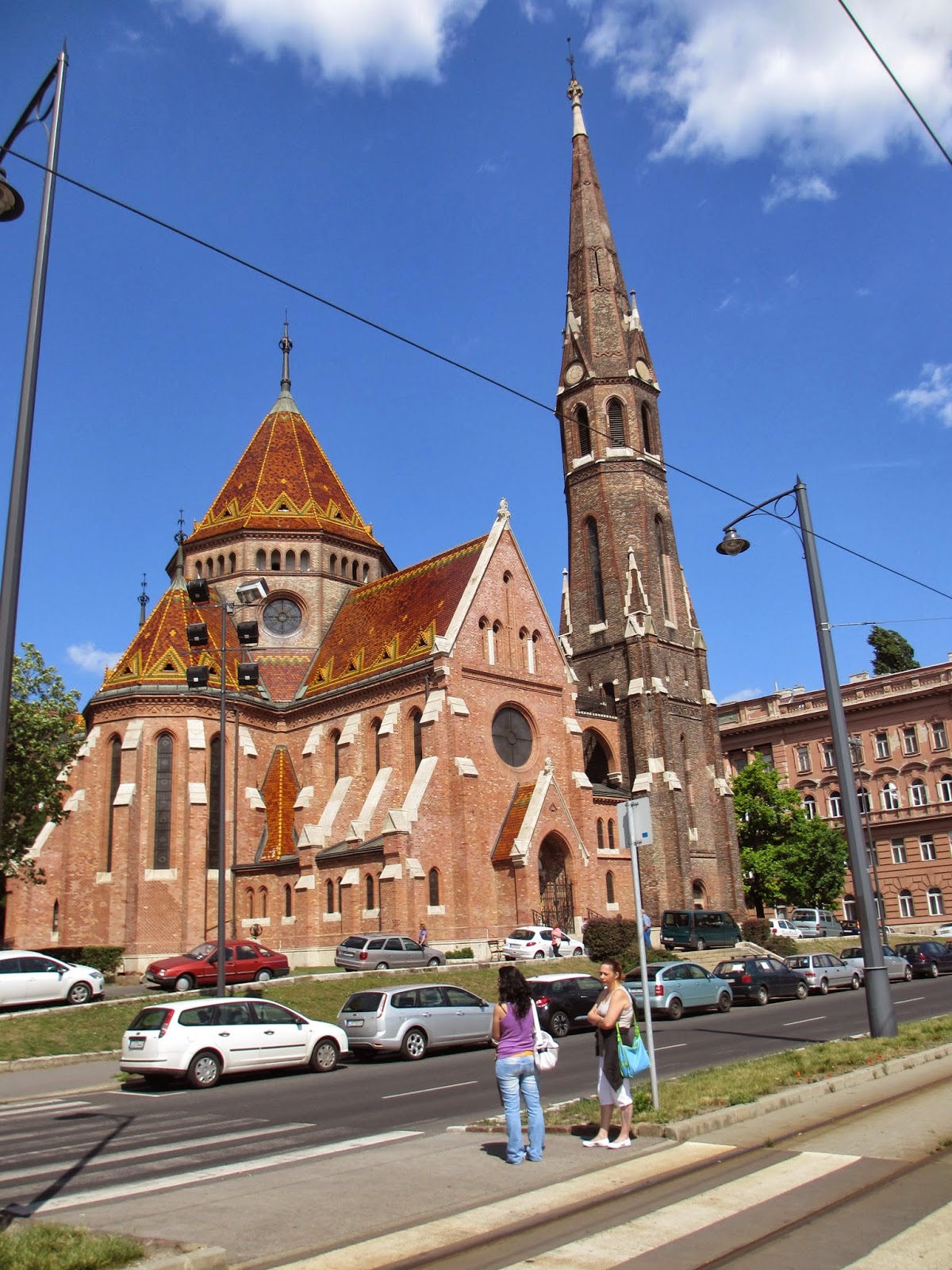Buda Calvinist Church:
The Buda Calvinist Church was the first reformed church in Buda. Building started in 1892 and was completed in 1896. A 62 meter high tower stands apart from the church. The church is a main nave surrounded by four sanctum-like parts, with a central decagonal superstructure above them. The spiry pyramidal roof is covered by multi-colored Zsolnay tiles. During World War II the building suffered severe damage and it is still under renovation. The beautiful and distinctive architecture drew us to it, but we were unsuccessful in trying to get inside.
 |
| The Buda Calvinist Church has an unusual architecture that drew us to it. Unfortunately, we could not get inside. |
 |
| From the Pest side of the Danube, looking at the Buda Calvinist Church in the foreground and the Roman Catholic Matthias Church behind it on the hill. |
 |
| Distinctive brown tiles are somewhat like Matthias Church, but not as elaborate. |
 |
| Figure on top of the steeple. |
Reformed Church in Hungary:
The Reformed Church in Hungary is a Protestant church that traces it roots to Calvin and the early Reformation. It is the second largest church in Hungary, after the Roman Catholics, with about 1.6 million members.
In the 1500s, Hungary was divided. The Habsburgs ruled the northwest and the west and the Ottoman Empire ruled the east. The Ottomans did not encourage conversion to Islam so the reformation spread to those parts of Hungary. The western part of Hungary under Habsburg rule had a strong counter-reformation push which helped the Roman Catholic church retain its dominance there. In the 1700s Hungary was gradually liberated from Ottoman rule by an alliance led by the Habsburgs. The Habsburgs then began a strong counter-reformation push which effectively made the Protestants second class citizens. In 1867 the Austro-Hungarian Monarchy was established. This was a compromise that re-established the sovereignty of the Kingdom of Hungary separate from and no longer subject to the Austrian Empire. Regions were governed by separate parliaments and prime ministers and rule was maintained by a single head of state. This emancipated the Hungarian Protestants. In 1881 the four Hungarian Reformed Church Districts held a united Synod meeting in Debrecen and the modern Hungarian Reformed Church was born.
Adversity followed. After World War I, the Peace Treaty of Trianon in 1920 removed two-thirds of former Hungarian territories from Hungary and large numbers of members were now in different countries. Then following World War II, the Communist government confiscated churches and forced the Reformed Church to sign an agreement that brought the work and personnel of the church under control of the Communist Party. Forty years of Communist rule set back all of the Hungarian churches. Political changes of the 1990s has brought relief.
Hungarian Reformed Church:
The Hungarian Reformed Church ("HRC") was established in 2009 in Debrecen. It incorporates HRC congregations within and without Hungary, including congregations in Romania, Slovakia, Serbia, Croatia and Slovenia. It has 27 presbyteries, each with about 30 to 40 congregations, four districts (Cistibiscan, Transtibiscan, Danubian and Transdanubian) and the General Synod.






Very informative - thank you.
ReplyDeleteNice and important piece of history.
ReplyDelete